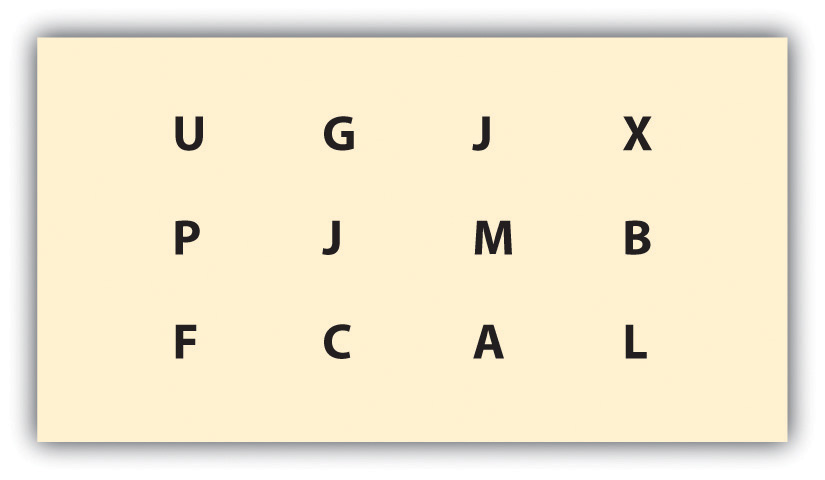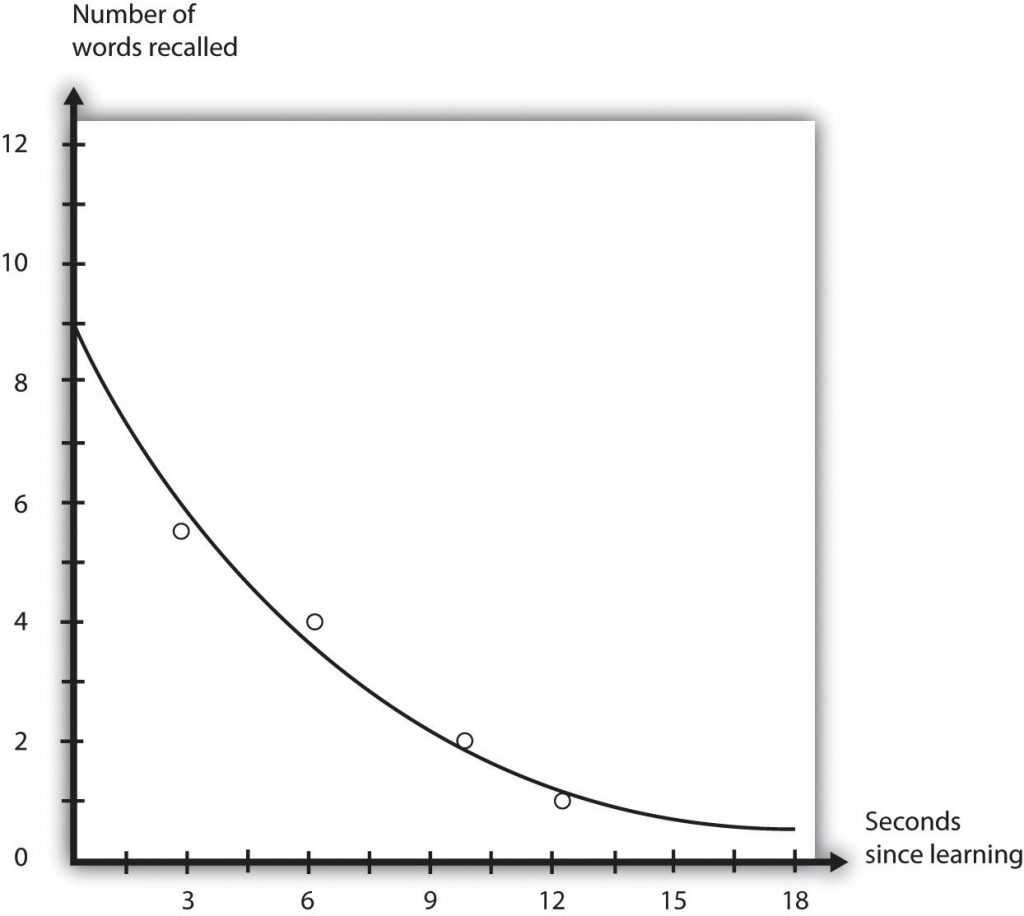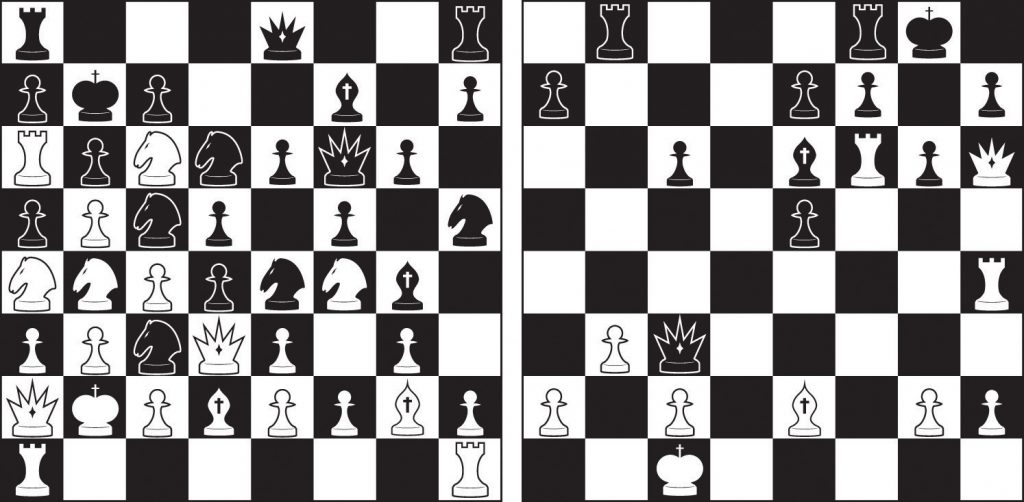10.1 Memory Models and Systems
Learning Objectives
- Describe three stages of memory.
- Explain the function of the central executive, the phonological loop, the episodic buffer, and the visuospatial sketchpad in working memory.
- Explain how maintenance rehearsal and chunking can improve memory.
Memory models
The model of memory that has dominated this field for the last 50 years is the three-box memory model (Atkinson & Shiffrin, 1968), which will be a strong focus in our discussion of memory. However, it is important to recognize that memory, like other areas in psychology, is not static, and it remains to be seen what other models of memory will emerge, particularly given the increasing ability for researchers to image the brain as we are thinking. Before leaving this section, we will introduce you to an alternate model of memory.
Stages of memory: Sensory, short-term, and long-term memory
One way of understanding memory is to think about it in terms of stages. The Atkinson-Shiffrin model of memory, also called the three-box model, (Atkinson & Shiffrin, 1968) describes three stages, or boxes, in the active process of creating a memory. According to this approach (see Figure 10.2), information begins in sensory memory, moves to short-term memory, and eventually moves to long-term memory. However, not all information makes it through all three stages; most of it is forgotten. Whether the information moves from shorter-duration memory into longer-duration memory, or whether it is lost from memory entirely, depends on how the information is attended to and processed.

Sensory memory
Sensory memory refers to the brief storage of sensory information. Sensory memory is a memory buffer that lasts only very briefly and then, unless it is attended to and passed on for more processing, is forgotten. The purpose of sensory memory is to give the brain some time to process the incoming sensations and to allow us to see the world as an unbroken stream of events rather than as individual pieces. Sensory memory is fleeting; this makes sense in that we need to be able to attend to sensations as they enter our consciousness but to be able to quickly move on to the next stimulus.
Visual sensory memory is known as iconic memory. Iconic memory was first studied by psychologist George Sperling (1960). In his research, Sperling showed participants a display of letters in rows (see Figure 10.3). However, the display lasted only about 50 milliseconds (1/20 of a second). Then, Sperling gave his participants a recall test in which they were asked to name all the letters that they could remember. On average, the participants could remember only about one-quarter of the letters that they had seen.

Sperling reasoned that the participants had seen all the letters but could remember them only very briefly, making it impossible for them to report them all. To test this idea, in his next experiment, he first showed the same letters, but then after the display had been removed, he signaled to the participants to report the letters from either the first, second, or third row. In this condition, the participants now reported almost all the letters in that row. This finding confirmed Sperling’s hunch: participants had access to all of the letters in their iconic memories, and if the task was short enough, they were able to report on the part of the display he asked them to. The “short enough” is the length of iconic memory, which turns out to be about 250 milliseconds (1/4 of a second).
Auditory sensory memory is known as echoic memory. In contrast to iconic memories, which decay very rapidly, echoic memories can last as long as four seconds (Cowan, Lichty, & Grove, 1990). This is convenient as it allows you — among other things — to remember the words that you said at the beginning of a long sentence when you get to the end of it, and to take notes on your psychology professor’s most recent statement even after he or she has finished saying it.
In some people, iconic memory seems to last longer, a phenomenon known as eidetic imagery, or photographic memory, in which people can report details of an image over long periods of time. There is also some evidence for eidetic memories in hearing; some people report that their echoic memories persist for unusually long periods of time. The composer Wolfgang Amadeus Mozart may have possessed eidetic memory for music, because even when he was very young and had not yet had a great deal of musical training, he could listen to long compositions and then play them back almost perfectly (Solomon, 1995).
Short-term and working memory
Most of the information that gets into sensory memory is forgotten, but information that we turn our attention to, with the goal of remembering it, may pass into short-term memory. Short-term memory (STM) is the theoretical place where small amounts of information can be temporarily kept for more than a few seconds but usually for less than one minute (Baddeley, Vallar, & Shallice, 1990). Information in short-term memory is not stored permanently but rather becomes available for us to process, and the processes that we use to make sense of, modify, interpret, and store information in STM are known as working memory. Therefore, we must take a closer look at the components of working memory (Baddeley, 2001): the central executive, the phonological loop, the episodic buffer, and the visuospatial sketchpad. These components are thought to work together to provide us with short term memories.
To illustrate how these components work together, let’s consider the example. Imagine that you are driving home from work one day during rush hour, and you turn on your radio for the latest traffic report so that you can avoid the biggest traffic snarl-ups. The traffic report is delivered fairly quickly before returning to the radio program. You now have to make a decision about whether to continue on your route or divert at some point to avoid traffic. The phonological loop is your mental replaying of the auditory information given in the traffic report. The visuospatial sketchpad is your mental map of the area you will be driving through, with the traffic snarl-up mentally overlaid on the map. The episodic buffer is the mental narrative that keeps track of when and where you will have to exit the current route. These three components are directed by the central executive, which places more or less importance on any of these components and ultimately decides what you will do. The central executive can also integrate the current situation into previous memories to make sense of it — for example, if you had a similar situation previously and found that you needed to change lanes at a certain point, you could integrate that information into your current working memory.
Short-term memory is limited in both the length and the amount of information it can hold. Lloyd Peterson and Margaret Peterson (1959) found that when people were asked to remember a list of three-letter strings and then were immediately asked to perform a distracting task (e.g., counting backward by threes), the material was quickly forgotten (see Figure 10.4), such that by 18 seconds it was virtually gone.

One way to prevent the decay of information from short-term memory is to use working memory to rehearse it. Maintenance rehearsal is the process of repeating information mentally or out loud with the goal of keeping it in memory. We engage in maintenance rehearsal to keep something that we want to remember (e.g., a person’s name, email address, or phone number) in mind long enough to write it down, use it, or potentially transfer it to long-term memory.
If we continue to rehearse information, it will stay in STM until we stop rehearsing it, but there is also a capacity limit to STM. Try reading each of the following rows of numbers, one row at a time, at a rate of about one number each second. Then, when you have finished each row, close your eyes and write down as many of the numbers as you can remember.
- 019
- 3586
- 10295
- 861059
- 1029384
- 75674834
- 657874104
- 6550423897
If you are like the average person, you will have found that on this test of working memory, known as a digit span test, you did pretty well up to about the fourth line and then started having trouble. You likely missed some of the numbers in the last three rows and did pretty poorly on the last one.
The digit span of most adults is between five and nine digits, with an average of about seven. The cognitive psychologist George Miller (1956) referred to “seven plus or minus two” pieces of information as the magic number in short-term memory. Yet, if we can only hold a maximum of about nine digits in short-term memory, then how can we remember larger amounts of information than this? For instance, how can we ever remember a 10-digit phone number long enough to dial it?
One way we are able to expand our ability to remember things in STM is by using a memory technique called chunking. Chunking is the process of organizing information into smaller groupings (i.e., chunks), thereby increasing the number of items that can be held in STM. For instance, try to remember this string of 12 letters:
- XOFCBANNCVTM
You probably won’t do that well because the number of letters is more than the magic number of seven. Now try again with this one:
- CTVCBCTSNHBO
Would it help if you knew that the material in this string could be chunked into four sets of three letters each? It likely would, because instead of remembering 12 letters, you would only have to remember the names of four television stations. In this case, chunking changes the number of items you have to remember from 12 to only four.
Experts rely on chunking to help them process complex information. Herbert Simon and William Chase (1973) showed chess masters and chess novices various positions of pieces on a chessboard for a few seconds each. The experts did a lot better than the novices in remembering the positions because they were able to see the “big picture.” They did not have to remember the position of each of the pieces individually, but chunked the pieces into several larger layouts. However, when the researchers showed both groups random chess positions — positions that would be very unlikely to occur in real games — both groups did equally poorly, because in this situation the experts lost their ability to organize the layouts (see Figure 10.5). The same occurs for basketball. Basketball players recall actual basketball positions much better than do nonplayers, but only when the positions make sense in terms of what is happening on the court, or what is likely to happen in the near future, and thus can be chunked into bigger units (Didierjean & Marmèche, 2005).

If information makes it past short term-memory, it may enter long-term memory (LTM) where information can be held for days, months, and years. The capacity of long-term memory is large, and there is no known limit to what we can remember (Wang, Liu, & Wang, 2003). Although we may forget at least some information after we learn it, other things will stay with us forever. In the next section, we will discuss the principles of long-term memory.
The “three-box” model of memory (Atkinson & Shiffrin, 1968) that we have discussed to this point, while the most popular, is not the only model of memory that psychologists use. The parallel distributed processing model (McLelland & Rumelhart, 1985), also known as the connectionist model, proposes that memories are best explained by activation of processing units that link to other units at various nodes. The units are distributed inside a vast network and all operate in parallel. Units can “switch on” or “turn off” other units as information enters the network and becomes processed into memory. Thus, a memory would be represented in the interactions of units, all working in parallel. We will not discuss the parallel distributed processing model here; however, this model may well become more dominant as research progresses.
Key Takeaways
- The three-box model of memory argues that information processing begins in sensory memory, moves to short-term memory, and eventually moves to long-term memory.
- Working memory contains the processes that we use to maintain information in short-term memory: the central executive, the phonological loop, the episodic buffer, and the visuospatial sketchpad.
- Maintenance rehearsal and chunking are used to keep information in short-term memory.
- The parallel distributed processing model is another example of a theory of memory.
Exercises and Critical Thinking
- Describe a situation in which you need to use working memory to perform a task or solve a problem. How do the processes involved in working memory skills help you?
- Make a plan for applying “chunking” to something you need to remember — perhaps something in your psychology course.
Image Attributions
Figure 10.2. Used under a CC BY-NC-SA 4.0 license.
Figure 10.3. Used under a CC BY-NC-SA 4.0 license.
Figure 10.4. Used under a CC BY-NC-SA 4.0 license.
Figure 10.5. Used under a CC BY-NC-SA 4.0 license.
References
Atkinson, R. C., & Shiffrin, R. M. (1968). Human memory: A proposed system and its control processes. In K. Spence (Ed.), The psychology of learning and motivation (Vol. 2, pp. 89–195). Oxford, England: Academic Press.
Baddeley, A. D. (2001). Is working memory still working? American Psychologist, 56, 851–864.
Baddeley, A. D., Vallar, G., & Shallice, T. (1990). The development of the concept of working memory: Implications and contributions of neuropsychology. In G. Vallar & T. Shallice (Eds.), Neuropsychological impairments of short-term memory (pp. 54–73). Cambridge, England: Cambridge University Press.
Cowan, N., Lichty, W., & Grove, T. R. (1990). Properties of memory for unattended spoken syllables. Journal of Experimental Psychology: Learning, Memory, and Cognition, 16(2), 258–268.
Didierjean, A., & Marmèche, E. (2005). Anticipatory representation of visual basketball scenes by novice and expert players. Visual Cognition, 12(2), 265–283.
McLelland, J. L., & Rumelhart, D. E. (1985). Distributed memory and the representation of general and specific information. Journal of Experimental Psychology: General, 114(2), 159–197.
Miller, G. A. (1956). The magical number seven, plus or minus two: Some limits on our capacity for processing information. Psychological Review, 63(2), 81–97.
Peterson, L., & Peterson, M. J. (1959). Short-term retention of individual verbal items. Journal of Experimental Psychology, 58(3), 193–198.
Simon, H. A., & Chase, W. G. (1973). Skill in chess. American Scientist, 61(4), 394–403.
Solomon, M. (1995). Mozart: A life. New York, NY: Harper Perennial.
Sperling, G. (1960). The information available in brief visual presentation. Psychological Monographs, 74(11), 1–29.
Wang, Y., Liu, D., & Wang, Y. (2003). Discovering the capacity of human memory. Brain & Mind, 4(2), 189–198.

